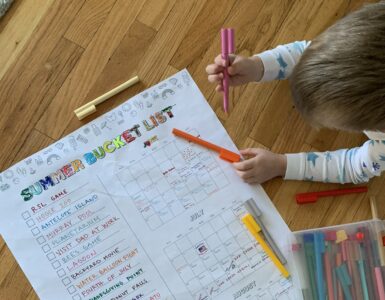To help you avoid adding your child’s name to this staggering statistic, Janet Brooks the child advocacy director at primary children’s medical center provides tips for keeping our kids safe.
_____________________________________________________________
General Tips and Safety Guidelines
• Before shopping, consider the child’s age, interest and skill level.
• When shopping, read labels or research before actually purchasing. Look for well-made toys and follow age and safety information on labels.
• Toys made of fabric should be labeled as flame resistant or flame retardant.
• Stuffed toys should be washable.
• Painted toys should be covered with lead-free paint.
• Art materials should say nontoxic.
• Crayons and paints should say ASTM D-4236 on the package, which means that they’ve been evaluated by the American Society for Testing and Materials
• Keep toys with small parts away from children under age 3.
• Carefully read instructions for assembly and use of toys.
• Make sure that proper safety equipment, i.e., helmets, is purchased with toys such as bikes, skateboards, skis, roller skates, etc.
• Remove and discard all packaging from a toy before giving it to a baby or small child.
• Supervise children when they play. A toy intended for an older child may be dangerous for a younger child.
• Remind caregivers, including grandparents, of play-related safety concerns.
• Separate and store toys by age levels. Teach children to put toys away after playing. Safe storage prevents falls and inappropriate toys from falling into the hands of younger children.
• Check old and new toys regularly for damages such as sharp edges or small parts. Make any needed repairs or discard damaged toys immediately.
• Sign up to receive product recalls with the Consumer Product Safety Commission at www.cpsc.gov.
Frequently Asked Questions
Q. How many injuries and deaths are caused by toys each year?
A. There are approximately 200,000 toy-related injuries treated in hospital emergency rooms nationwide. On average, 15 children under the age of 14 die each year from a toy-related injury.
Q. What causes most deaths?
A. The most frequent cause of death related to a toy is choking on small parts.
Q. It seems that a lot of toys have been recalled recently?
A. Actually, the number of toys recalled is a fraction of the 3 billion toys sold in the United States each year. The vast majority of toys on the market are considered to be safe.
Q. What can I do to make sure I buy toys that don’t have lead paint or dangerous magnets?
A. The best way to know if a toy is safe to buy is to stay current on what toys have been recalled. Toy shoppers can stay up-to-date on toy recalls by signing up for email alerts at www.cpsc.gov.
Q. What else should I think about when holiday shopping for toys?
A. First, buy toys from a reputable retailer. Second, avoid buying second-hand or used toys; they may have been recalled and deemed to be unsafe. Third, use caution when buying toys online; only buy from sources you know have been vigilant about removing recalled toys from their inventories.
Q. How do I know if a part is too small for a young child?
A. Small parts testers are available from various sources. If you don’t have one, you can use an empty toilet paper roll (which is slightly larger in diameter that a small parts tester.) Do not let small children play with anything that can fit into any of these cylinders.
Q. What does it mean to “actively supervise” children?
A. Simply being in the same vicinity, as your child is not necessarily supervising. Active supervision means keeping the child in sight and in reach and paying undivided attention.
TOY SAFETY AND RECALL RESOURCES
www.safekids.org
www.primarychildrens.org/healthandsafetyinformation/Kids Health
www.cpsc.gov.















Add comment